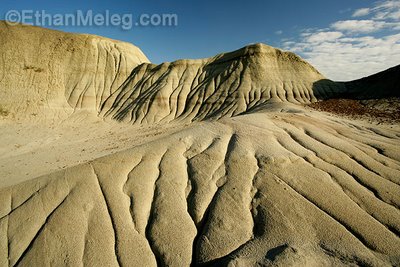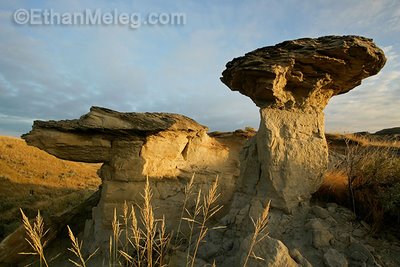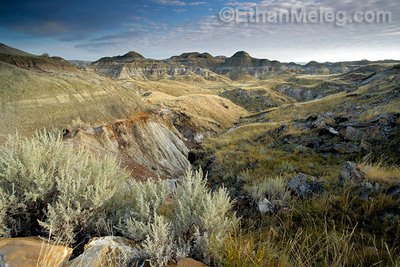 |
| Photo 1. Fall color scene on the Magnetawan River near the town of Magnetawan, ON. Gear: Canon 5D mk III, 16-35mm lens, Singh-Ray LB warming polarizer. |
Nothing beats a drizzly, overcast day to get me motivated to shoot fall colors. Those are perfect conditions to bring out the rich red, orange and yellow foliage... and create beautiful images of satin-blurred creeks and waterfalls. I spent a few days this past week touring around the Muskoka area searching out the best scenes, just as the fall colors peaked. Since I've only recently moved over to the east side of Georgian Bay, I'm still learning new locations. Thankfully, there's a great resource to help! Fellow Ontario photographer Andrew McLachlan's ebook "A Photographer's Guide to the Ontario Landscape" is packed full of great locations. It would have taken me years to find all of these spots without Andrew's book!
In photo 1 (above), I laid down in the creek with my wide angle lens to get an intimate portrait of the bubbles and leaves (yes, I arranged some of them). It was worth getting soaked for this shot! I tried to balance the shutter speed.... slow enough to slightly blur the cascading water, but still keep the bubbles and leaves sharp as they were moving slightly. It was shot at 1/2s, f/11.
 |
| Photo 2. Fall foliage along the Magnetawan River near Burk's Falls. Gear: Canon 5D mk III, 16-35mm lens, Singh-Ray LB warming polarizer. |
Photo 3 (below) is one of the most well known fall river scenes in Ontario - the Oxtongue River Rapids just west of the Algonquin Park west gate. These scenes are very easy to shoot. Here's my recipe: 1) go on a overcast or drizzly day, 2) use a tripod for stability and polarizing filter to cut glare and give you rich saturation, 3) set a low ISO speed and stop down your lens to a smaller aperture (eg. f/11 or 16) which results in a slower exposure that will render the water blurred. My favorite shutter speeds for blurred water are around a 1/4 to 1/2 second.
 |
| Photo 3. Fall colours at Oxtongue River Rapids west of Algonquin Provincial Park. Gear: Canon 5D mk III, Sigma 24-70mm lens, Singh-Ray LB warming polarizer. |
 |
| Photo 4. Rosseau Falls and fall colors. Gear: Canon 5D mk III, 16-35mm lens, Singh-Ray LB warming polarizer. |
Stubbs Falls in Arrowhead Provincial Park (photo 5 - below) is one of the most picturesque of all the falls I photographed this autumn. As a bonus, the access is very easy... a short hike! I liked it so much, I posed for a self-portrait next to the cascade.
 |
| Photo 5. Self portrait at Stubbs Falls in Arrrowhead Provincial Park. Gear: Canon 5D mk III, 16-35mm lens, Singh-Ray LB warming polarizer. |

























